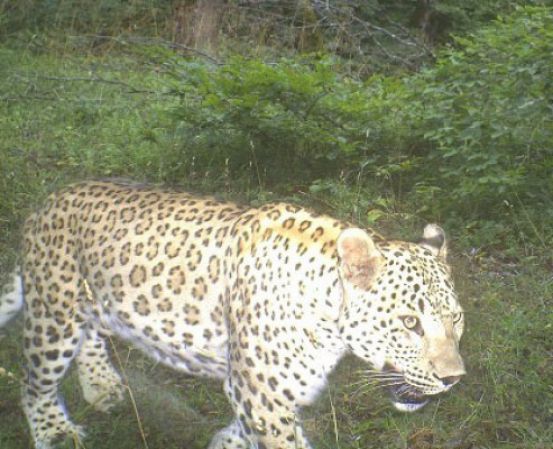Azerbaijan steps up efforts to protect leopards

By Amina Nazarli
Just a thousand years ago, the typical representatives of the major broad felines, leopards, lived in large number throughout the Caucasus.
They previously lived in the territory from the North Caucasus to the Red Sea and from the Bosporus to Pakistan, but in the 20th century, the area of their living significantly reduced.
The region's population was growing together with herds and flocks. In parallel, the number of wild ungulates was decreasing.
Spotted predator had no choice but to include a livestock in their diet. In response, people declared a war to eradicate them. Then, these graceful leopards were dying in the traps and loops.
The number of Caucasian leopards announced by the International Union for Conservation of Nature (IUCN) in a report about the animal species on the verge of extinction across the Middle East and Asia is less than 1,000, while their number is around 25 in the southwestern part of the Caucasus region, on the border between Azerbaijan and Iran.
To save this brave type, the Ministry of Ecology and Natural Resources jointly with the World Wildlife Fund has launched a campaign to develop new National Plan of Action for the further five years, Spokesman of the Ministry Irada Ibrahimova said.
Leopards' protection requires a special place among the measures carried out for protecting the rare and endangered species of fauna.
Noting that the area of the protected territories has been extended twice, she added that the penalties for leopards hunting have been also tightened.
Earlier in 2013, photos of two adult male leopards were taken
during monitoring in Zangazur National Park and Hirkan National
Park, proving once again that these graceful animals dwell in the
territory of Azerbaijan.
This predatory beast is mostly found in Azerbaijan's Talysh
Mountain, Zangazur, Karabakh and Nakhchivan mountain areas.
Leopards are among the rare and endangered animals, living not only in Azerbaijan, but also throughout the world. Now, they are listed in the "Red List" of the International Union for Conservation of Nature as well as "Red Book" of Azerbaijan.
Over the past five years, different measures have been adopted including monitoring of leopards and their food items, developing the strategy of removing obstacles and creating corridors, reducing the risks as well as raising public awareness.
Currently there are 9,000 national parks, 11 state nature reserves and 24 state natural reservations in the country.
A project aimed at protecting Caucasian leopards started by WWF in 2002. Activities in the field of leopards protection within the "Big Five" program, which was initiated by Vice President of the Heydar Aliyev Foundation, Founder and Head of IDEA Leyla Aliyeva. Covering the protection of five endangered species of fauna (bear, wolf, gazelle, eagle, and leopard) in the Caucasus, it has been successful so far.
The future of the Caucasian leopard took a step forward earlier this year with the establishment of a conservation agreement between Panthera, the world's leading wild cat conservation organization, and the International Dialogue for Environmental Action (IDEA) of Azerbaijan.
The two sides were supposed to develop a plan for assessing the living conditions of leopards in Azerbaijan and protection of these species which are on the verge of extinction.
Here we are to serve you with news right now. It does not cost much, but worth your attention.
Choose to support open, independent, quality journalism and subscribe on a monthly basis.
By subscribing to our online newspaper, you can have full digital access to all news, analysis, and much more.
You can also follow AzerNEWS on Twitter @AzerNewsAz or Facebook @AzerNewsNewspaper
Thank you!
